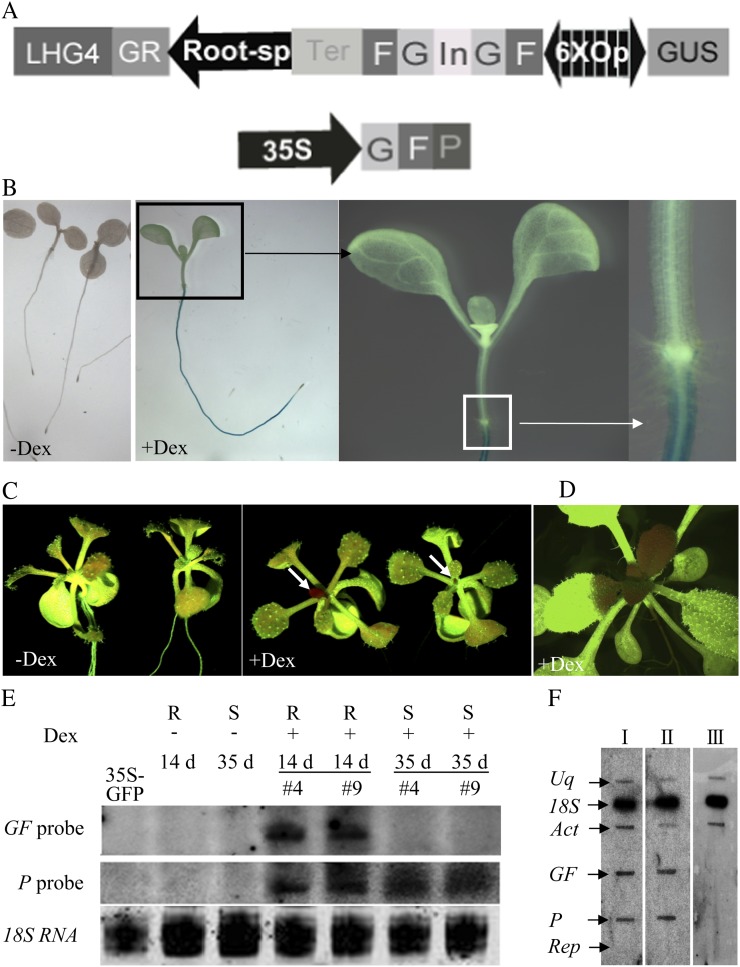Figure 3.
Phenotypic and molecular characterization of the RtSS Arabidopsis lines. A, Physical map of the inducible vector TobRb7-hpGF. In this vector, a root-specific promoter from tobacco, TobRb7, controls the expression of GR-LHG4, which in turn activates the expression of a silencing hairpin, hpGF, and a GUS reporter when Dex is present. B, Induced GUS expression in TobRB7-GRLHG4/Op-hpGF (RtSS) plants. There is no GUS expression in RtSS plants without Dex (−Dex); after Dex treatment, RtSS plants show GUS expression only in roots (+Dex). Enlarged views of shoot (black rectangle) and root-hypocotyl junction (white rectangle) show GUS expression confined below the junction. C, RtSS plants after 16 d of treatment with Dex showing GFP silencing in the shoots (+Dex) but no silencing without Dex (−Dex). Arrows indicate silencing in young leaves. D, A 22-d-old RtSS plant showing bizonal leaf silencing after Dex induction. E, Northern-blot analysis of siRNA production in the RtSS plants with and without Dex induction. Lanes #4 and #9 represent two separate RtSS lines. R, Root; S, shoot. F, Nuclear run-on assay showing that shoot silencing is posttranscriptional. I, Gel from a 41-d-old noninduced RtSS plant; II, gel from a completely silenced RtSS plant after 31 d of Dex treatment; III, gel from wild-type Col-0 Arabidopsis. Act, Actin; Uq, ubiquitin; Rep, E. coli replication protein.

